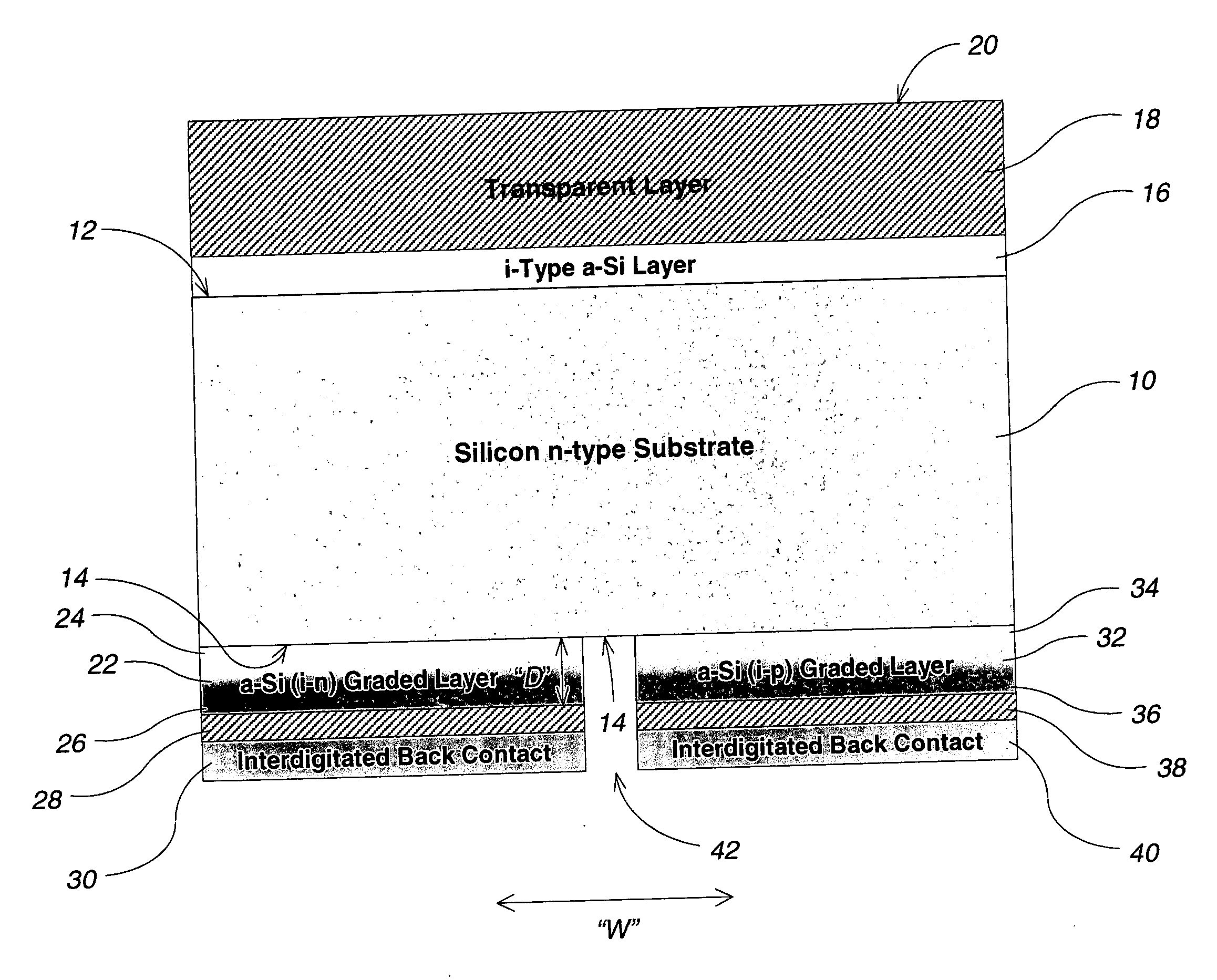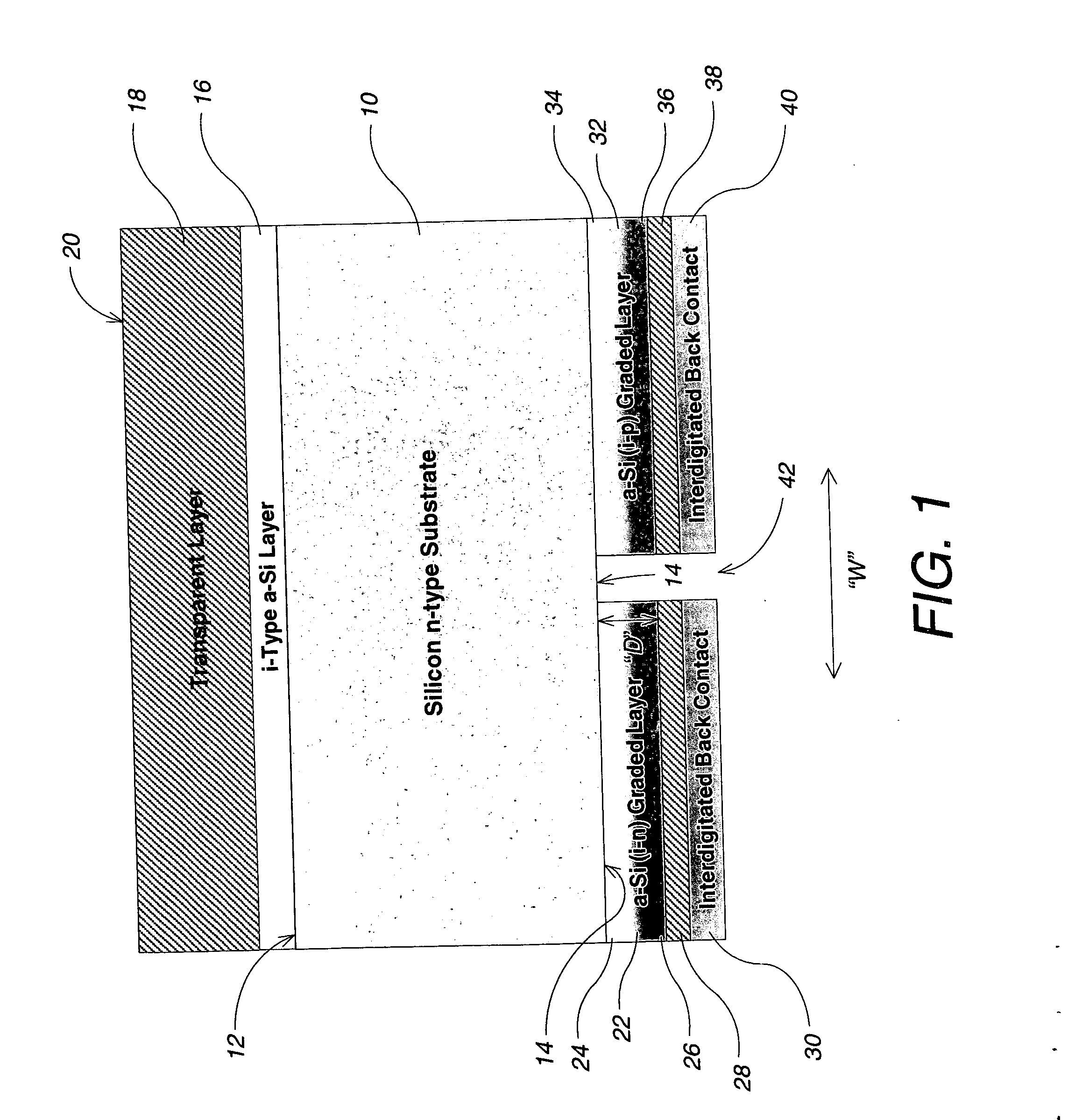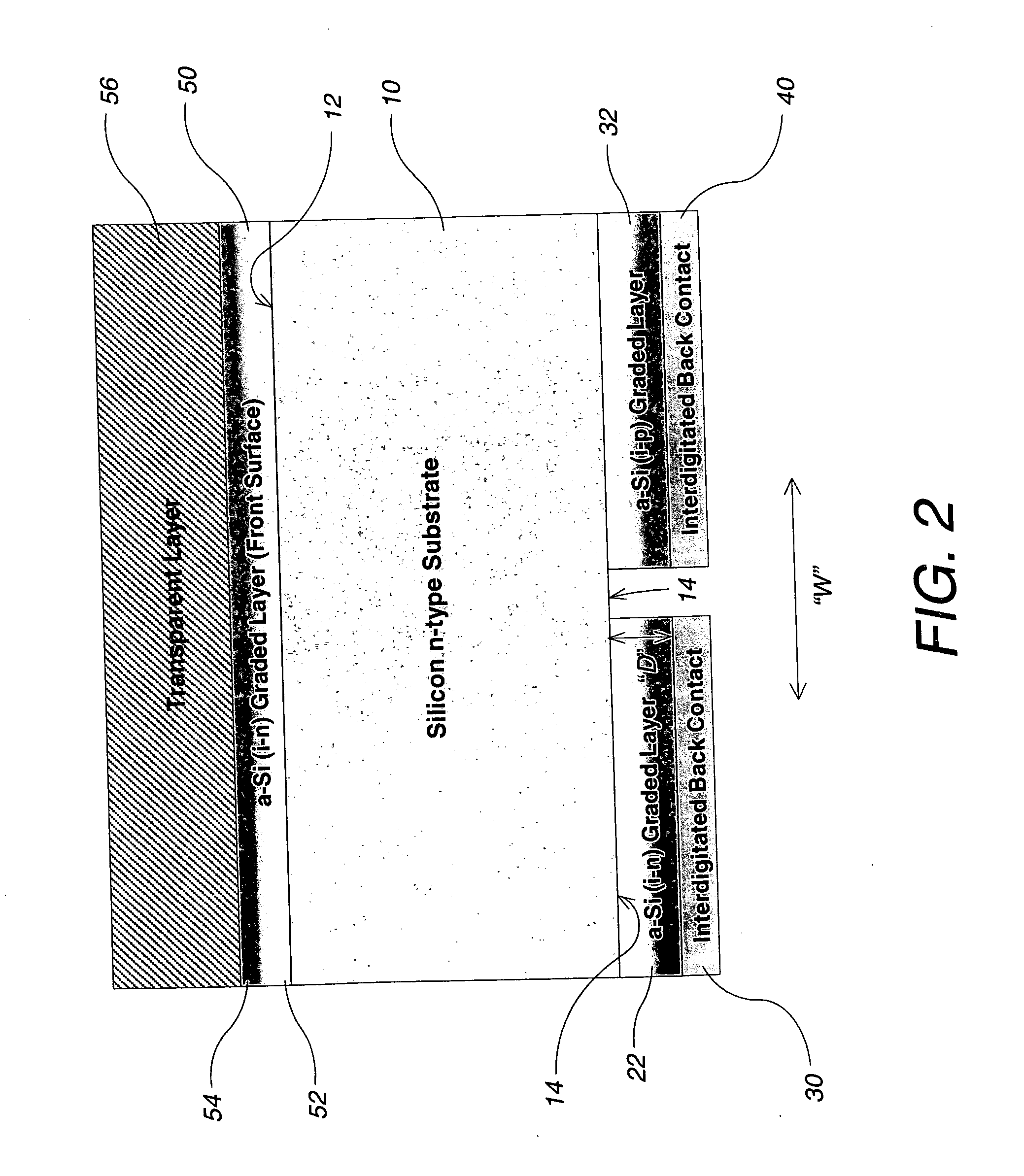Photovoltaic device which includes all-back-contact configuration; and related processes
- Summary
- Abstract
- Description
- Claims
- Application Information
AI Technical Summary
Problems solved by technology
Method used
Image
Examples
examples
[0069]A general example is provided below. It should be viewed as merely illustrative, and should not be construed to be any sort of limitation on the scope of the claimed invention.
[0070]The fabrication of photovoltaic devices according to some embodiments of the present invention can be undertaken as follows: Monocrystalline or polycrystalline semiconductor substrates (or silicon wafers) of one conductivity type can first be etched by conventional techniques. For example, a texturing solution containing selected proportions of ultra-pure deionized water, potassium hydroxide (KOH, 45% concentration), and isopropyl alcohol can first be prepared in a quartz vessel. The temperature of the texturing solution is usually maintained at about 65° C.-80° C. The substrate can then be immersed in the agitated solution for a period of time determined to be suitable to achieve the desired degree of etching (typically about 5-60 minutes). Following the texturing step, the substrate is removed an...
PUM
 Login to View More
Login to View More Abstract
Description
Claims
Application Information
 Login to View More
Login to View More - R&D
- Intellectual Property
- Life Sciences
- Materials
- Tech Scout
- Unparalleled Data Quality
- Higher Quality Content
- 60% Fewer Hallucinations
Browse by: Latest US Patents, China's latest patents, Technical Efficacy Thesaurus, Application Domain, Technology Topic, Popular Technical Reports.
© 2025 PatSnap. All rights reserved.Legal|Privacy policy|Modern Slavery Act Transparency Statement|Sitemap|About US| Contact US: help@patsnap.com



